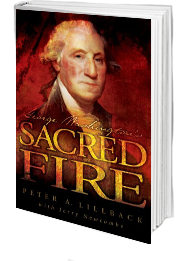Providence Today: Museum of American Revolution
Speaker 1:
Welcome to Providence Today. We’re so glad that you’re here. We’re standing inside the American Revolution Museum and right next to this great representation of the Liberty Tree that was in the Boston Common in 1765, an old tree that was identified by the Sons of Liberty as a place of meeting, as they brought their protest against the Stamp Act. We’re very proud about this piece of wood that you actually find right here in the middle. This is a piece of the wood that came from the last Liberty Tree that came down by Hurricane Floyd in 1999. Under this tree, the Sons of Liberty gathered to declare their independence, when they read the Declaration of Independence for the first time in Annapolis, Maryland.
Speaker 1:
The tree grew, perhaps as almost 800 years old, when it came name down. Francis Scott Key went to school underneath this tree, the man who wrote our National Anthem and if you look over on the other side of the display here, you’ll actually find a quote from William Eddis, Annapolis, Maryland, September 27th, 1775. “This morning early we were alarmed by the beating of drums and a proclamation for the inhabitants to assemble at the Liberty Tree.” That’s the very tree we’re talking about.
Speaker 1:
Now notice alongside that coming up, there’s a pole and a cap. See the cap down here at the same time, this actually comes from the time of General Suetonius invading Phrygia and at that time, he went and took a pileus, a cap from a slave and put it on his battle lance, and lifted it up, “If any man stands under this pole and cap, he will be free,” and that ancient symbol of a Liberty Pole and Cap goes through the English history. It becomes part of the story and Paul Revere will actually use it on his masthead when he does his newspapers.
Speaker 1:
So it becomes the equivalent where you don’t have a Liberty Tree, you have a Liberty Pole and Cap. So the Providence Forum is very pleased that here at the Museum of American Revolution, we are thanked very directly for the gift of this piece of wood that we rescued from the last tree. So the Liberty Tree, some have said, was the first internet, the place where people came together to share their concerns. They couldn’t meet in government buildings because they were criticizing the king. So homegrown rule going right into the ground with the roots under a tree, this becomes the symbol of Liberty. So we’re grateful for that and most people don’t know of Golden Hill, but we all know it, that place it’s called Wall Street today.
Speaker 1:
At Wall Street, there was a large pole and cap put up by the Patriots and the British knocked it down. A few days later, the Patriots put up another mast with a cap on site and it was knocked down. Some months passed and then they woke up and there was an iron-clad pole with a cap on top and that began the homegrown resistance. Well, finally it too was attacked and the first skirmish that ever took place between the British and the Americans, where there actually was hostilities and pushing came directly as a result of that Liberty Pole and Cap in New York city.
Speaker 1:
It was only a few weeks later where we hear the story over here about the Boston Massacre, this is where there was actually the shedding of blood and lives taken but the first conflict occurred over the Liberty Pole at Golden Hill or Wall Street in New York city today. All of this is a direct part of the story of the Liberty Tree. We’re also appreciative that the Museum of the American Revolution and their beautiful brochure on its last page actually celebrates this as one of the key parts of their children’s education program. It’s part of a please touch experience. You can touch a piece of history right here. Well, this is Providence Today. Thanks for listening in.
